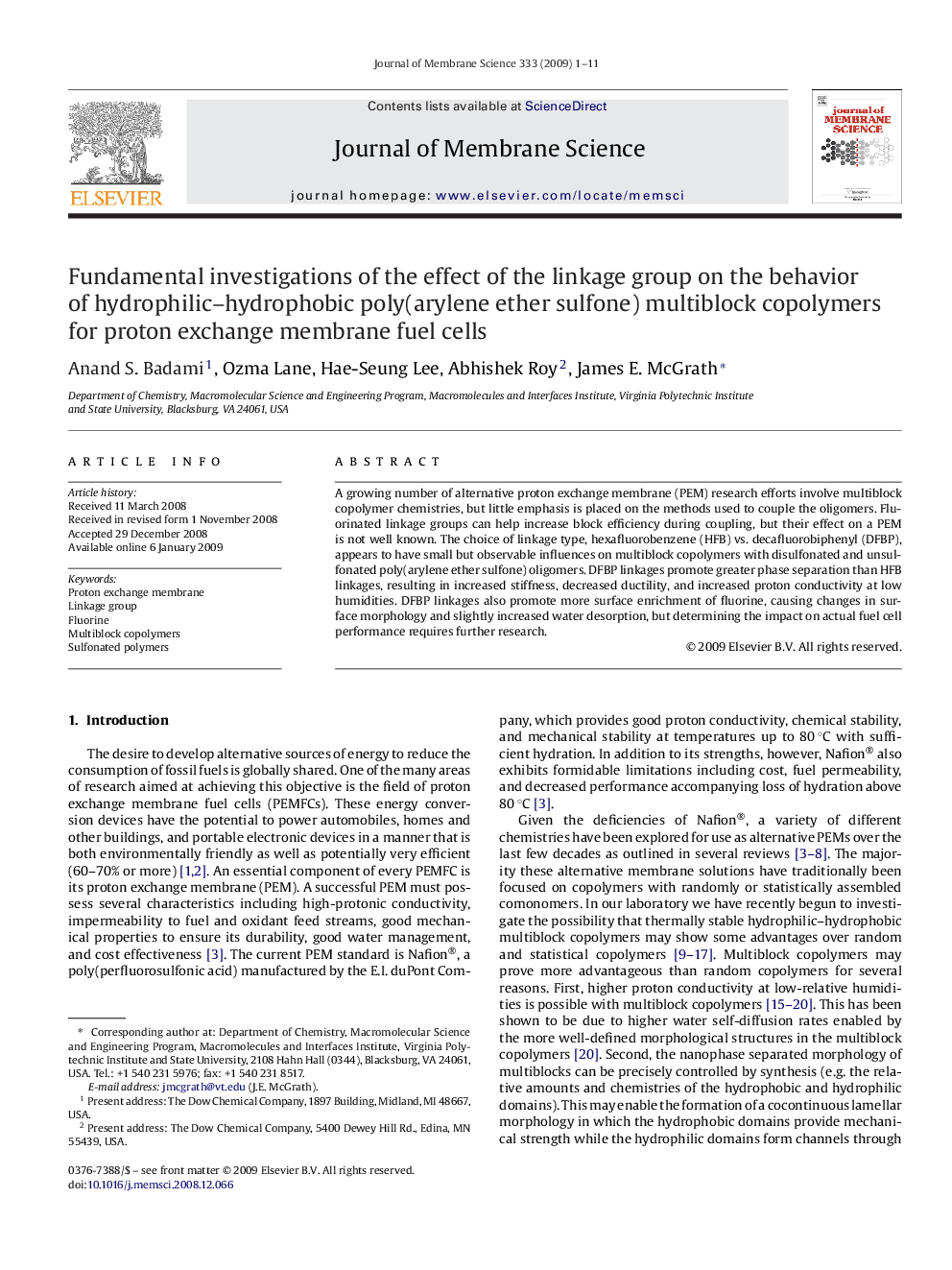| Article ID | Journal | Published Year | Pages | File Type |
|---|---|---|---|---|
| 636978 | Journal of Membrane Science | 2009 | 11 Pages |
Abstract
A growing number of alternative proton exchange membrane (PEM) research efforts involve multiblock copolymer chemistries, but little emphasis is placed on the methods used to couple the oligomers. Fluorinated linkage groups can help increase block efficiency during coupling, but their effect on a PEM is not well known. The choice of linkage type, hexafluorobenzene (HFB) vs. decafluorobiphenyl (DFBP), appears to have small but observable influences on multiblock copolymers with disulfonated and unsulfonated poly(arylene ether sulfone) oligomers. DFBP linkages promote greater phase separation than HFB linkages, resulting in increased stiffness, decreased ductility, and increased proton conductivity at low humidities. DFBP linkages also promote more surface enrichment of fluorine, causing changes in surface morphology and slightly increased water desorption, but determining the impact on actual fuel cell performance requires further research.
Related Topics
Physical Sciences and Engineering
Chemical Engineering
Filtration and Separation
Authors
Anand S. Badami, Ozma Lane, Hae-Seung Lee, Abhishek Roy, James E. McGrath,
